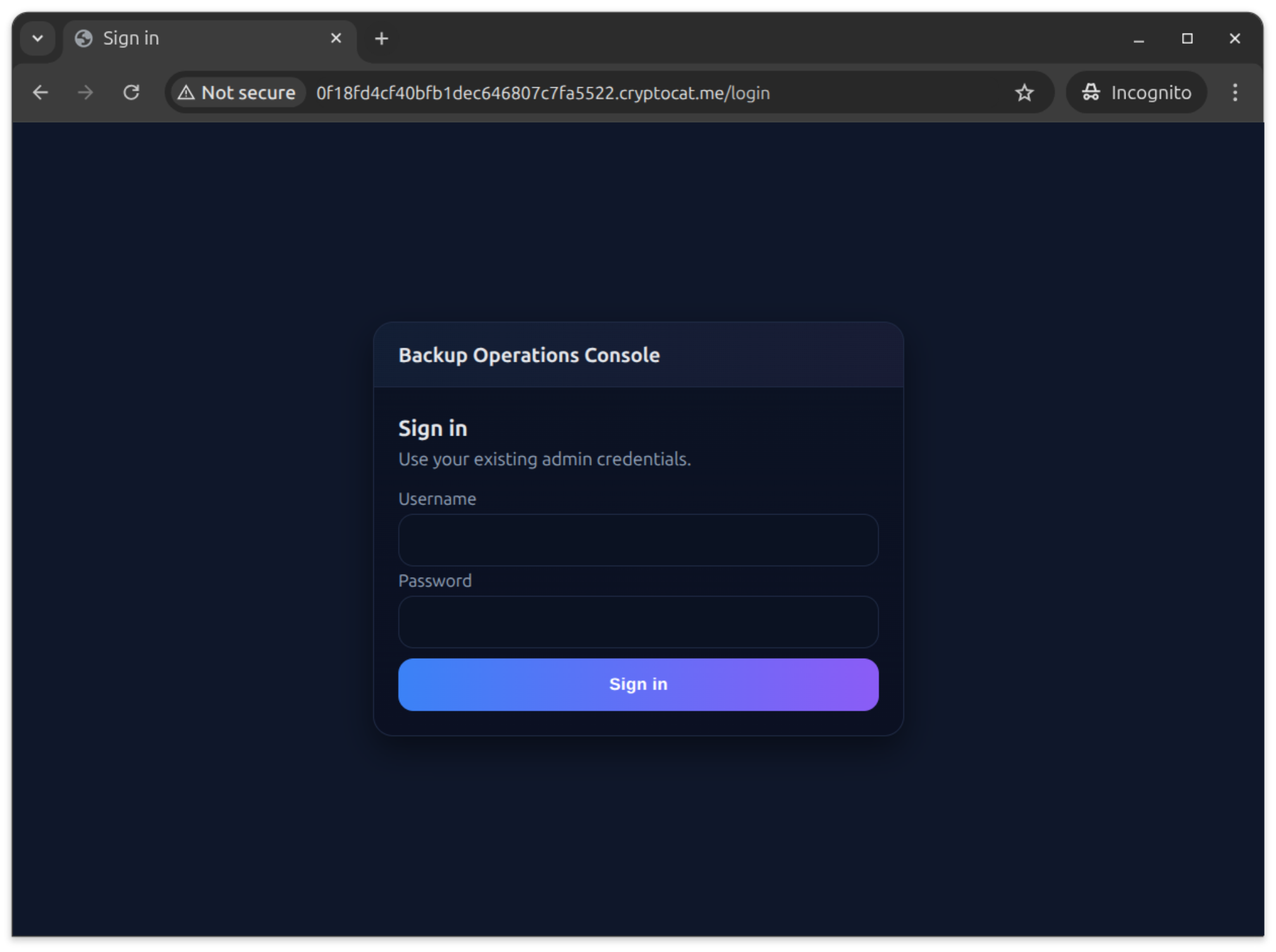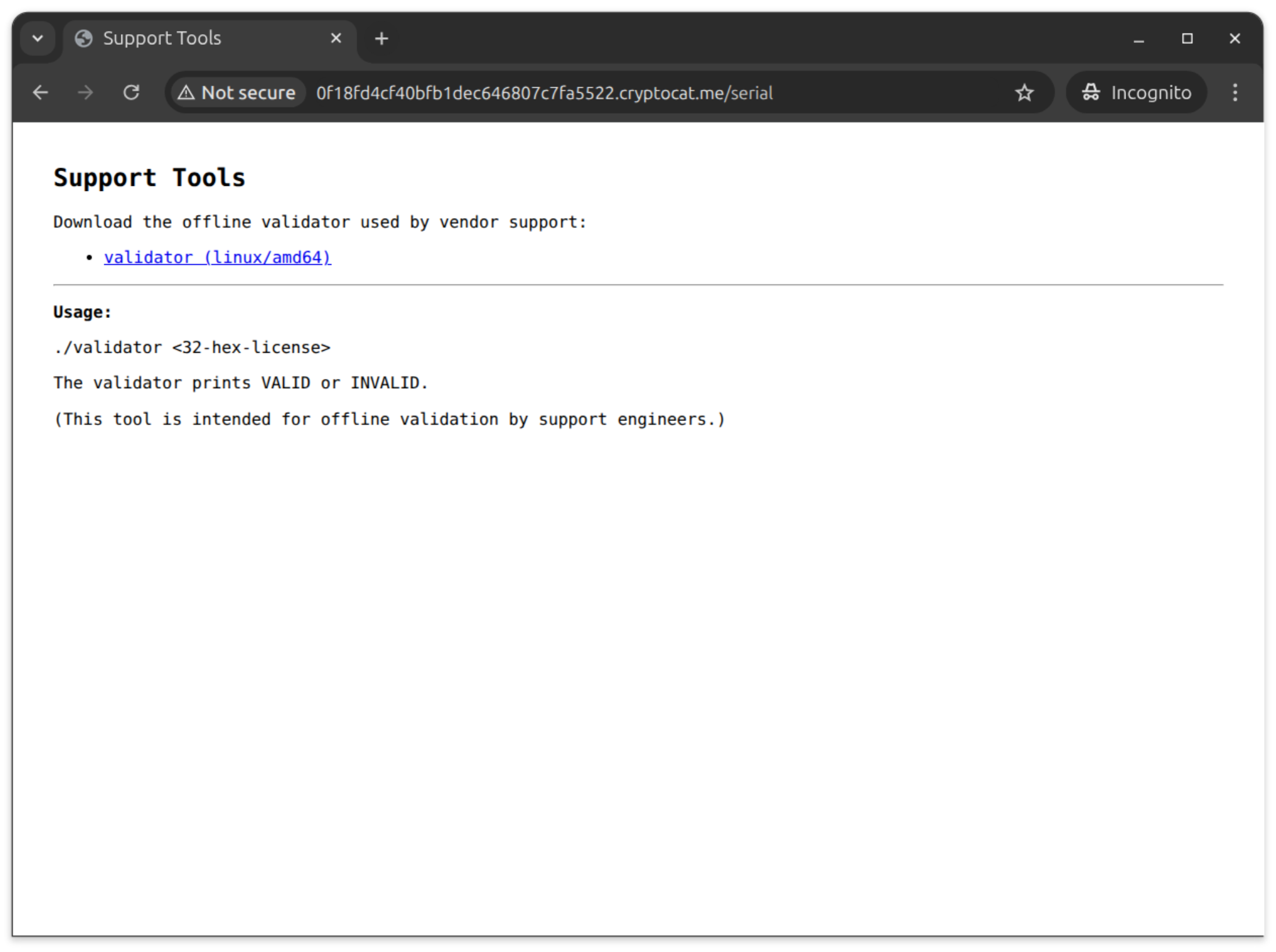
New CTF challenge! It will run until the 30th of October ⏳
There’s no prizes, but the first 3 solves will earn themselves the “Hacker Cat” rank in discord.
You can use the this channel to discuss, but no hints/spoilers until the challenge finishes, please!
DM me if you get the flag or have questions (no hints!) 🙂 Download “Ultimate Calculator 3000” to get started 👇
ultimate_calc binary
The binary starts by printing the calculator menu and awaits the user input. The option 2 - Check serial (Professional feature) looks interesting. But if we run it we are presented with Sorry! This feature is still under construction.. Start by loading the file into Ghidra.
The code responsible for this option is the following:
if (choice == '2') {
puts("\x1b[33m\nSorry! This feature is still under construction.\x1b[0m");
FUN_101500();
break;
}
This code immediately prints a message and returns; the serial-check logic is elsewhere. Checking some other methods in this binary we can spot a different function that looks interesting - FUN_1019a0. We can spot strings like Serial must be 32 hex characters., Invalid serial or flag so this looks like our target.
The function starts by decoding two byte arrays: DAT_102540 and DAT_102580. We can decode them with the following short python code:
def decode(start, data):
b = []
for c in data:
start = (start * 0x41c64e6d + 0x3039) & 0x7fffffff
b.append(c ^ (start >> 0x10) & 0xFF)
return ''.join([chr(c) for c in b])
s = 0xbeef
DAT_102540 = [0x30, 0x30, 0x01, 0xb4, 0xe0, 0x0f, 0x3c, 0xe2, 0x99, 0xe4, 0x28, 0x59, 0x52, 0xa2, 0x90, 0xe6, 0x7e, 0x7a, 0x49, 0x10, 0x54, 0xf5, 0xfd, 0x1c, 0xa4, 0x8d, 0xf8, 0xc2, 0x22, 0x6e, 0x2e, 0x0b, 0x33, 0xd7, 0xcd, 0x03, 0x93, 0x5e, 0xc0, 0xb7, 0x1a, 0x94, 0x0a, 0x7b, 0x87, 0x4b, 0x6d, 0xe8, 0xfb, 0x89, 0xf5, 0xd8]
print(decode(s, DAT_102540))
s = 0x1337
DAT_102580 = [0x16, 0x63, 0x7c, 0x4b, 0xc8, 0x8f, 0x69, 0x62, 0x13, 0x95, 0x4c, 0x4b, 0x78, 0x75, 0x44, 0xb6, 0xca, 0xed, 0x02, 0x76, 0x0d, 0xa6, 0x99, 0x25, 0xa4, 0xa7, 0x7e, 0x8c, 0xb8, 0xf4, 0x34, 0xae, 0x1c, 0x52, 0x76, 0x23, 0x70, 0x6a, 0x8a, 0x87]
print(decode(s, DAT_102580))
The first one gives us the URL - http://9cdfb439c7876e703e307864c9167a15.cryptocat.me and the second one ` {“user”:”cat”,”pass”:”MeowSec159102374”}` - user and password payload.
The next two urls are constructed by concatenating the decoded URL with paths - /auth and /check.
Next, a 32-hex-character serial is being requested from the user and stored for later.
After that, a curl request to /auth endpoint with the user and password payload.
Doing that via curl gives us a token:
curl -H “Content-type: application/json” -d ‘{“user”: “cat”, “pass”: “MeowSec159102374”}’ http://9cdfb439c7876e703e307864c9167a15.cryptocat.me/auth
{“token”:”c00203c53bb1284ff698a541555a3232731dfdd8”}
This token later is used to be set as a Bearer token for the request to the /check endpoint.
snprintf(serial_payload,0x200,"{\"serial\":\"%s\"}",serial);
iVar5 = do_curl(check_endpoint,serial_payload,local_948,&local_b98);
We don’t know the serial and there was nothing until this point that would give away how it is constructed. So we can try with a random one:
curl –oauth2-bearer “c00203c53bb1284ff698a541555a3232731dfdd8” -H “Content-type: application/json” -d ‘{“serial”: “12345678901234567890123456789012”}’ http://9cdfb439c7876e703e307864c9167a15.cryptocat.me/check {“ok”:false}
That doesn’t give us much but if we include -v for the curl command we get an extra info in the response.
Link: http://0f18fd4cf40bfb1dec646807c7fa5522.cryptocat.me/serial; rel=”alternate”; title=”backup”
Visiting this url we are redirected to /login screen.

We can use the credentials we’ve extracted earlier from the binary to log in.

There, there’s only one thing to do. Download the support tool - validator, that can tell if a 32-hex-character serial number is valid.
validator binary
This time it’s a go binary with symbols. And among many methods we can spot main.verifySerialHex so we can start there.
First, the code decodes the 32-hex-character serial into 16 bytes using encoding/hex.Decode. Then, we constructed crypto/hmac object passing data located at 0x4a8111. Here the disassembly is a bit misleading showing us that there are some runtime.strequal called but in fact it’s hmac.Write.
The first thing that we write is the string cat:MeowSec159102374:. Next is the first 4 bytes from our serial. And at the end we call hmac.Sum.
Here’s an equivalent python program:
import hmac
key = [0x65, 0x36, 0x39, 0x64, 0x30, 0x63, 0x35, 0x31, 0x36, 0x65, 0x62, 0x38, 0x63, 0x61, 0x65, 0x32, 0x33, 0x66, 0x62, 0x62, 0x34, 0x30, 0x30, 0x32, 0x64, 0x66, 0x63, 0x34, 0x63, 0x33, 0x34, 0x33]
_hmac = hmac.new(bytes(key), digestmod="sha256")
_hmac.update(b'cat:MeowSec159102374:\x12\x34\x56\x78')
_hmac.hexdigest()
Later, there’s a loop that checks the first 12 bytes of the hmac with the rest part of the serial.
check_correctness:
00487ef2 0f b6 34 10 MOVZX ESI,byte ptr [RAX + RDX*0x1]
00487ef6 0f b6 7c MOVZX EDI,byte ptr [RCX + RDX*0x1 + 0x4]
11 04
00487efb 31 fe XOR ESI,EDI
00487efd 48 ff c2 INC RDX
00487f00 09 f3 OR EBX,ESI
00487f02 48 83 fa 0c CMP RDX,0xc
00487f06 7c ea JL check_correctness
And if they are equal the validator will return true as our serial is valid.
So for our start of serial 12345678, the end should be 30a16273a8af4ecf304ad05c.
Let’s send that again to the /check endpoint.
curl –oauth2-bearer “c00203c53bb1284ff698a541555a3232731dfdd8” -H “Content-type: application/json” -d ‘{“serial”: “1234567830a16273a8af4ecf304ad05c”}’ http://9cdfb439c7876e703e307864c9167a15.cryptocat.me/check
And that gives us the flag: {"flag":"flag{4_bi7_0f_r3v_4_bi7_0f_w3b}","ok":true}.